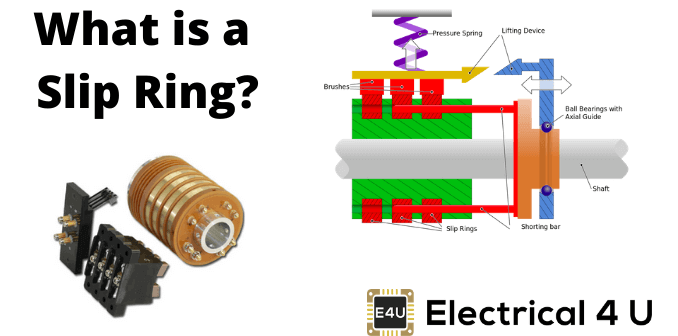Electrical Slip Ring: What is it?
What is a Slip Ring?
A slip ring is defined as an electromechanical device that is used to connect a stationary system to a rotating system. It is used in applications that require rotation while transmitting power or electrical signals.
The slip ring also is known as an electrical rotary joint, rotating electrical connector, or electrical swivels. It is used in various electrical machines to improve mechanical performance and simplify the operation.
If a device rotating for a fixed number of revolutions. It may be possible to use a power cable with sufficient length. But it is a quite complex setup. And it is impossible if components rotate continuously. This setup is not practical and reliable for this type of application.
How does a Slip Ring work?
The slip rings consist of two main components; metal ring and brush contact. According to the application and design of the machine, the number of rings and brushes are decided.
The brushes are made up of graphite or phosphor bronze. The graphite is an economical option but the phosphor bronze has good conductivity and more wear life.
Depending on the RPM (rotations per minute), the brushes are fixed with rotating rings, or rings are rotating with fixed brushes. In both of these arrangements, the brushes maintain contact with the ring by pressure from the springs.
Generally, rings are mounted on the rotor and it is rotating. And brushes are fixed and mounted on the brush house.
The rings are made up of conductive metal like brass and silver. It is mounted shaft but insulated with a center shaft. The rings are insulated from each other by nylon or plastic.
As the rings rotate, the electrical current is conducted through the brushes. Therefore, it makes a continuous connection between the rings (rotating system) and brushes (fixed system).
Slip ring vs Commutator
The slip ring and commutator both are used to maintain a connection between the rotating system and the electrical system. But the function of both of these arrangements is different. Both the slip ring and commutator made of conductive material.
In the below table, we summarized differences between the slip ring and commutator.
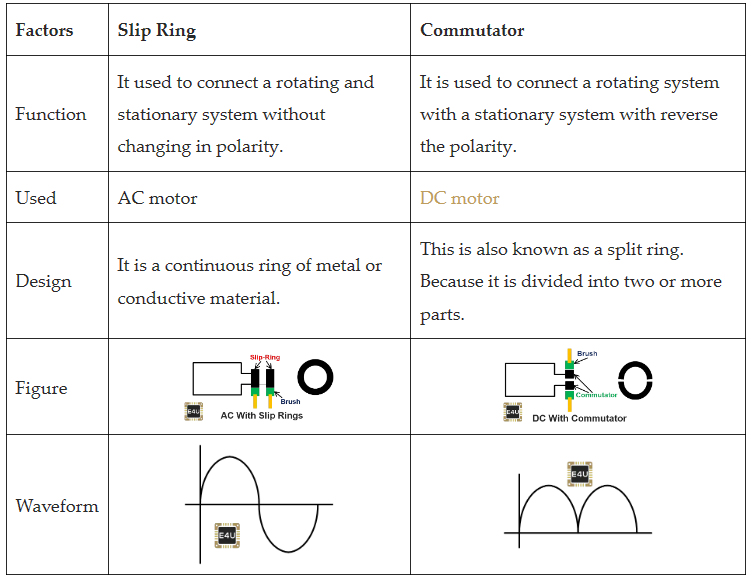
Types of Slip Rings
Slip rings are classified into various types according to construction and size. Types of slip rings are explained as below.
Pancake Slip Ring
In this type of slip ring, the conductors are arranged on a flat disc. This type of concentric disc placed on the center of a rotating shaft. The shape of this slip is flat. So, it is also known as a flat slip ring or platter slip ring.
It will reduce axial length. Therefore, this type of slip ring is designed for space-critical applications. This arrangement has more weight and volume. It has greater capacitance and greater brush wear.
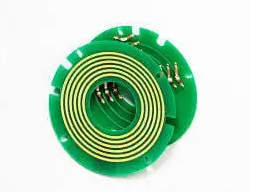
Pancake Slip Ring
Mercury Contact Slip Ring
In this type of slip ring, mercury contact is used as a conducting media. Under the normal temperature condition, it can transfer current and electrical signals by liquid metal.
The mercury contact slip ring features strong stability and less noise. And it provides the most scientific and economical option for applications in industries.
But the use of mercury creates a safety concern. Because it is a toxic substance. It is very dangerous to use this type of slip ring in applications like food manufacturing or processing and pharmaceutical. This is because it may corrupt the product if there is a mercury leakage.
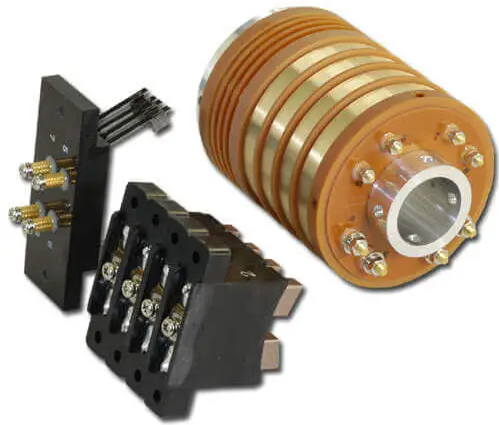
Mercury Contact Slip Ring
Through Hole Slip Rings
This type of slip ring has a hole in the center of the slip ring. It is used in devices where requires to transmit power or signal when need 360˚ rotating.
This type of slip rings is designed to install with a flange on a sleeve bracket. It has free space in the center for connecting the shaft of a machine without affecting cable while it is rotating.
It has a long life span and offers low noise and maintenance. This type of slip ring is used for routing hydraulic pneumatic passages and it can integrate with high-frequency joints.
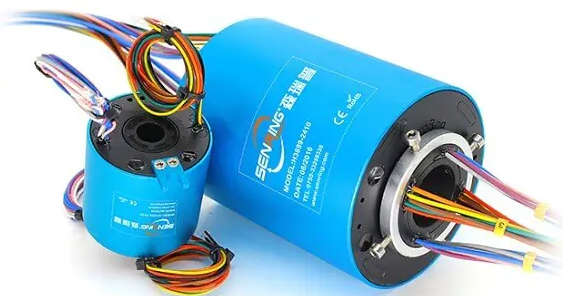
Through Hole Slip Rings
Ethernet Slip Ring
This type of slip ring is developed to provide reliable products that allow the transfer of the ethernet protocol through a rotary system.
While choosing an ethernet slip ring for communication, there are three important parameters that must be considered; Return Loss, Insertion Loss, and Crosstalk.
Ethernet slip rings designed to meet the requirement of matching impedance, reducing losses, and controlling crosstalk.
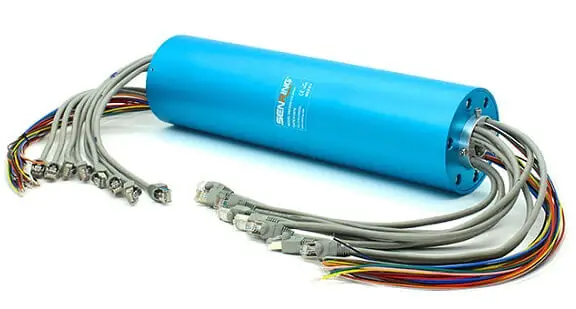
Ethernet Slip Ring
Miniature Slip Rings
This type of slip ring is very small in size and it is designed for small devices to transfer signals or power from a rotating device.
Miniature slip rings are ideal for electrical devices like control panel, video transmitter, and sensor.

Miniature Slip Rings
Fiber Optic Slip Ring
This type of slip ring is designed to pass signals across rotating interfaces when a large amount of data needs to transfer.
Fiber optic slip ring is also known as the Fiber Optic joint or Fiber-Electric Rotary joint. This type of slip ring is used in the application like; sensor signal management, HD video transmission system, radar, and video monitoring system, medical equipment, microwave communication, etc.
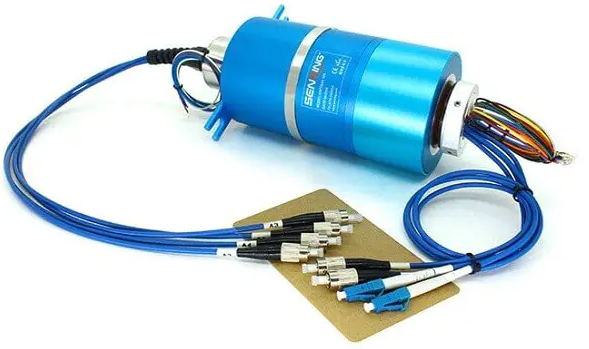
Fiber Optic Slip Ring
Wireless Slip Ring
This type of slip ring is not using carbon brushes or friction-based metal rings. As the name suggests, it can transfer data and power wirelessly. For that, it uses the electromagnetic field.
The electromagnetic field produced by the coils which are placed in the rotating receiver and stationary transmitter.
The wireless slip ring is the best alternative for the traditional slip ring as it reduced the mechanical contacts. Therefore, it can be used in harsh environments and it reduces maintenance.
But the only disadvantages are that the power that can be transmitted between the coil is limited. For the same volume of traditional slip ring can transfer more amount of power compared to the wireless slip ring.

Wireless Slip Ring
Statement: Respect the original, good articles worth sharing, if there is infringement please contact delete.
Electrical4U is dedicated to the teaching and sharing of all things related to electrical and electronics engineering.





